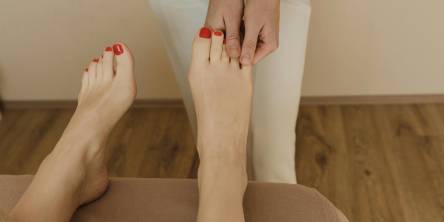7 Myths About Sciatica You Shouldn't Believe

Sciatica is a condition in which the sciatic nerve, the longest nerve in the human body, becomes irritated or pinched. Sciatic pain can be felt in the lower back, buttocks, leg, and even down to the foot. This is a common but often misunderstood condition. There are many myths that only complicate the diagnosis and treatment of this condition. In this article, we have gathered seven of the most common misconceptions about sciatica and explained why you shouldn't believe them.
1. Sciatica is a disease
Sciatica is often referred to as a condition, but it's actually a symptom, not a diagnosis. It indicates compression or irritation of the sciatic nerve, but doesn't reveal the underlying cause. The cause of the pain can be a herniated disc, spinal stenosis, osteoarthritis, spondylolisthesis, tumors, or even pregnancy. Therefore, it's important not only to treat the pain but also to identify and eliminate its root cause.
2. Sciatica goes away on its own and doesn't require treatment
Sometimes symptoms improve, especially if the cause is temporary swelling or a slightly pinched nerve. In other cases, however, ignoring the problem can lead to worsening of the condition, loss of sensation, muscle weakness, and even gait disturbances. If the pain doesn't go away within a few days or gets worse, you should see a doctor and get examined. You can search for "sciatic nerve specialist near me" to find an experienced and qualified specialist in your area.
3. Only older people suffer from sciatica
Although sciatica is more common in people over 40, young people can also suffer from this condition. For example, people who lift heavy objects with incorrect technique, sit still for long periods, or are overweight have a significantly increased risk of developing sciatica. Adolescents and young adults can also experience this symptom under certain circumstances.
4. Bed rest is the best treatment
Until recently, doctors recommended lying down and limiting movement for back pain. However, modern research has shown that prolonged bed rest can only worsen sciatica. Muscles weaken, circulation decreases, and inflammation can increase. Instead, doctors recommend moderate activity, physical therapy, stretching exercises, and walking at a comfortable pace. It's important to stay mobile, but not overexert yourself.
5. All leg pain is sciatica
Not all pain that radiates down the leg indicates sciatica. Other conditions, such as piriformis syndrome, varicose veins, hip inflammation, or even a simple strain, can cause the problem. The hallmark of sciatica is a sharp, stabbing pain that often worsens with coughing, bending, or prolonged sitting. A consultation with a neurologist and usually an MRI scan are necessary for an accurate diagnosis.
6. Surgery is the only way to get rid of sciatica
Many people believe that a diagnosis of sciatica automatically leads to surgery. In fact, most patients can be successfully treated with conservative methods such as physical therapy, medication, manual therapy, and injections. Surgery is only considered in extreme cases when there is a risk of permanent nerve damage or when improvement is not seen over a long period of time.
7. If there is no pain, there is no problem
Pain is one of the ways the body signals a problem. However, the disappearance of pain doesn’t always mean that the nerve is no longer pinched. Sometimes the pain disappears, but other symptoms like tingling, numbness, and muscle weakness persist. These are warning signs that may indicate progressive damage to the sciatic nerve. Therefore, it is important not only to eliminate the symptoms but also to see a doctor regularly.
The bottom line
The sciatic nerve is a vital part of the nervous system, and its irritation can significantly impair quality of life. By understanding the true causes, obtaining a timely diagnosis, and choosing the right treatment, complications can be avoided and mobility restored. Forget the myths and leave your spinal health to the specialists. This is the only way to ensure the pain doesn't recur.
Similar Articles
Knee pain affects millions of people around the world. It can make daily activities difficult and impact your quality of life. Knee discomfort can be caused by injuries, chronic conditions, or overuse.
If your knees have recently started sounding like a bowl of Rice Krispies (snap, crackle, pop!) every time you stand up, congratulations — you're officially living the adult experience.
Search engine optimization (SEO) may help physical therapists improve their online exposure and drive more visitors to their website.
You're sitting at home with two completely different treatment plans from two doctors you trust.
When conservative therapy fails, surgery may be required to alleviate chronic foot or ankle discomfort.
Your body changes with time - muscles and bones shift, ligaments loosen, and circulation may slow. Unfortunately, the aging process has an impact on our feet as well.
Back problems aren't just discomfort or temporary back pain. Many of them can be extremely dangerous and lead to serious complications if you don't seek medical attention on time.
Irritable bowel syndrome (IBS) is a dysfunction of the gastrointestinal tract that manifests as abdominal pain, bloating, flatulence, and intestinal discomfort (constipation, diarrhea, or a combination of both.
Peripheral neuropathy is when the nerves outside your brain and spinal cord—called peripheral nerves—aren’t working the way they should.









